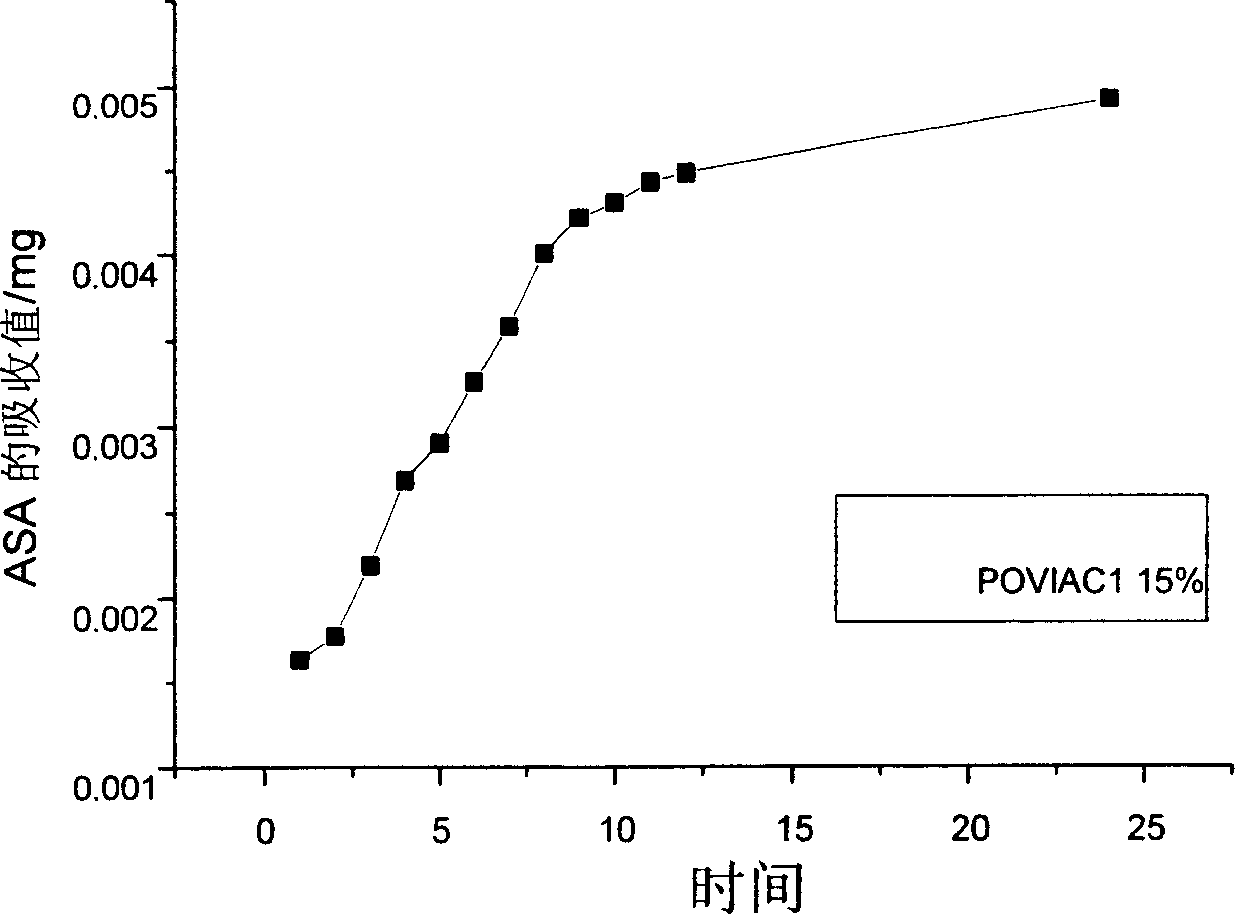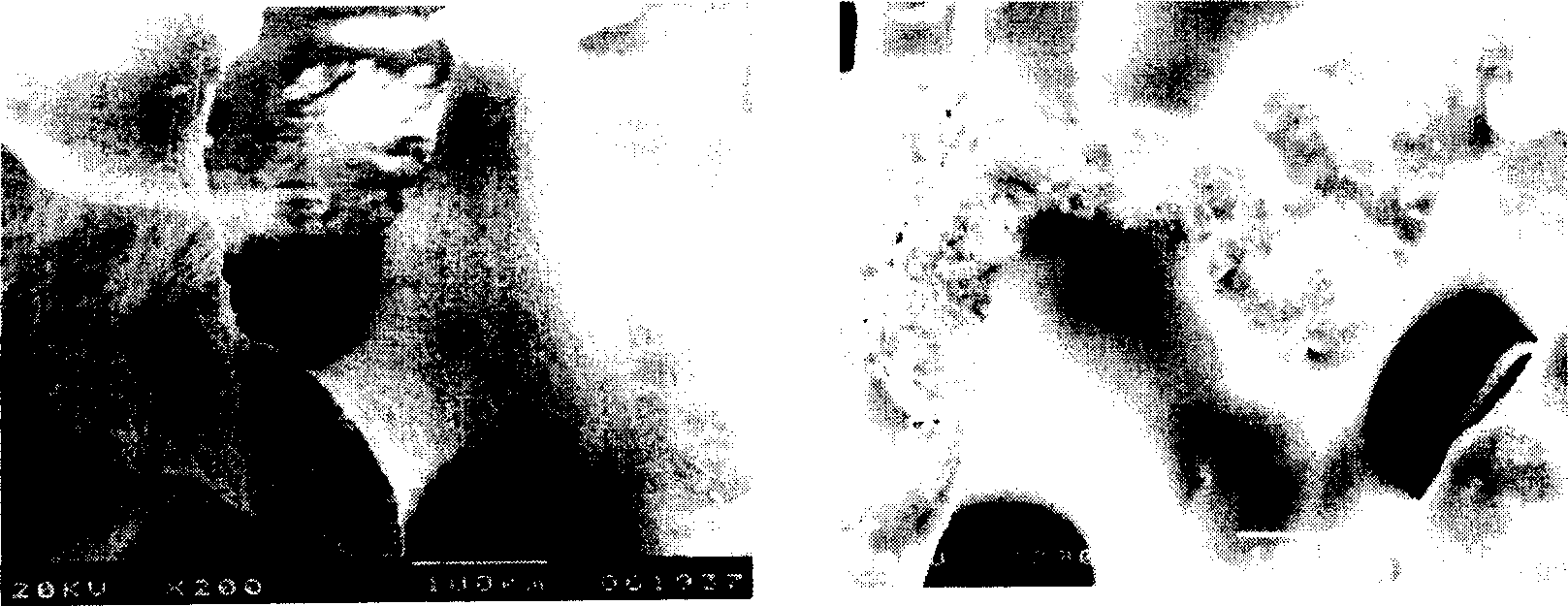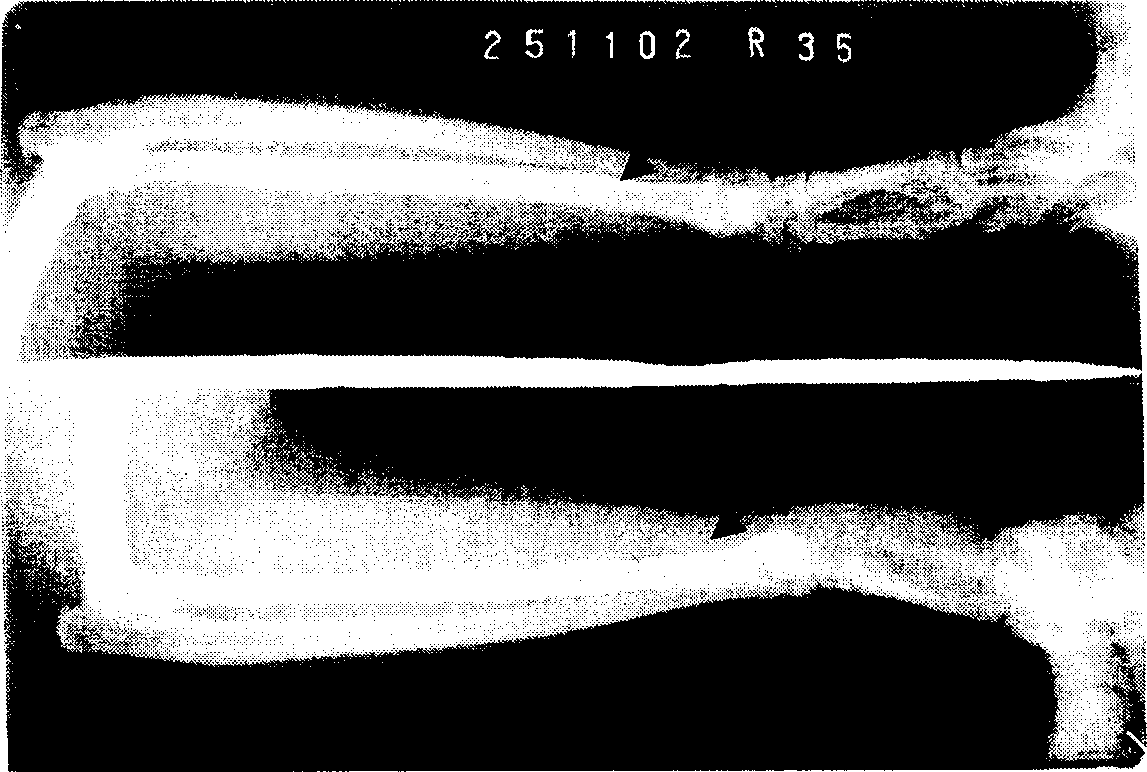Composite biomaterials for bone implants
A technology of composite biomaterials and bone implants, applied in bone implants, joint implants, joint implants, etc., can solve problems such as uneconomical
- Summary
- Abstract
- Description
- Claims
- Application Information
AI Technical Summary
Problems solved by technology
Method used
Image
Examples
Embodiment 1
[0021] A homogeneous mixture of calcium salts having an average particle size of 0.1 mm, (Table 1) of the approximate composition indicated in No. 10, is gradually moistened with POVIAC solution (25%) in acetone until a paste is obtained. The mixture was sieved to obtain granules with a diameter between 1 and 2 mm, which were left to dry at room temperature. The dried granules were pulverized in a commiseration mill, the powder obtained was wetted again with acetone, sieved and dried to obtain granulated compacts with an average particle size from 1 to 2 mm.
[0022] Thus, the obtained product with a polymer content of about 20% is suitable as a bone implant material for filling cavities in bone such as sequelae of tumors and cysts.
Embodiment 2
[0024] Acetylsalicylic acid was added to the inorganic salt mixture described in the previous examples, followed by proper mixing to obtain a homogeneous mass, which was carried out in the same manner to obtain granules with 15% POVIAC1 and 2.5% ASA. This "composite" acts as a system for controlled drug delivery (figure 1 ).
Embodiment 3
[0026] A portion of porous hydroxyapatite HAP-200 with a particle size between 2 and 2.5 mm and similar composition to Mixture 2 (González R.; Melo M.C.; Pérez A.; Rodríguez B.C. Coral-like structured porous hydroxyapatite HAP -200. Main physicochemical properties. Quimica Nova, 16 (6) November-December: 509-512; 1993) The particles were immersed in a 25% acetone suspension of POVIAC and stirred (Table 1) 10% with 0.1mm Particle size No. 5 mixture for 10 minutes. The particles were separated and air dried. The product obtained in this way maintains its original porous structure with polymer layer plugging in the entire surface ( figure 2 ).
PUM
| Property | Measurement | Unit |
|---|---|---|
| Bronsted acidity | aaaaa | aaaaa |
Abstract
Description
Claims
Application Information
 Login to View More
Login to View More - R&D
- Intellectual Property
- Life Sciences
- Materials
- Tech Scout
- Unparalleled Data Quality
- Higher Quality Content
- 60% Fewer Hallucinations
Browse by: Latest US Patents, China's latest patents, Technical Efficacy Thesaurus, Application Domain, Technology Topic, Popular Technical Reports.
© 2025 PatSnap. All rights reserved.Legal|Privacy policy|Modern Slavery Act Transparency Statement|Sitemap|About US| Contact US: help@patsnap.com



